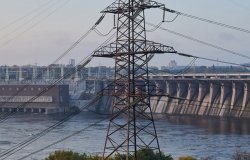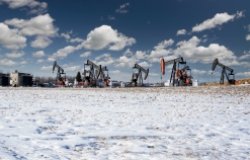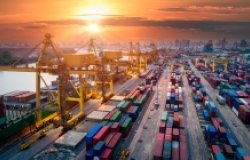CEF Director Jennifer Turner Interviewed by Deutsche Welle
China recently unveiled yet another massive plan to combat air pollution, a source of growing concern in the country. CEF Director Jennifer Turner examines how ordinary citizens are voicing their discontent.
DW: How dire is the current situation in China's megacities with regard to air pollution?
Jennifer Turner: Air pollution has been a growing problem in China, but only recently have many in the Chinese public begun to roundly condemn the smoggy skies as having reached unacceptable levels. For many years Chinese policymakers and citizens viewed pollution as the natural look and smell of "development."
This year, Beijing became the poster child for poor air quality when small particulate matter (PM2.5) hit 800+ on the Air Quality Index - a level that crashes well beyond the US scale, which tops off at 500 AQI (301-500 AQI is considered hazardous). For weeks on end in January and February this year, grey smog enveloped Beijing and other northern cities and the air quality was truly at dangerous levels.
Furthermore, Chinese and international health researchers have released some statistics recently that have received considerable attention in China, such as the number that some 1.2 million Chinese die early each year of respiratory illnesses linked to pollution.
How have the Chinese reacted to this?
There has been a seed change in terms of political space for citizens to demand a cleaner environment, stemming from laws that require greater government transparency and requirements for all environmental impact assessments to hold citizen hearings. Citizens in China have come to believe that they have a right to a clean environment and the expansion of the Internet and booming social media channels in China have given citizens the tools they need to express concerns or anger when pollution gets too severe, as was the case in Beijing earlier this year.
The so-called airpocolypse from this past winter sparked a huge uproar from the Chinese public, particularly the "netizens" sending scathing messages on Weibo and posting stories and photos on microblogs.
Chinese journalists and major news media outlets were also severe in their criticism of the poor air quality, blaming poor policy enforcement and even pointing to the lack of regulations of the oil industry in China to buy low sulfur, cleaner fuels. Chinese environmental NGOs were also vocal in their criticism and took actions to further emphasize the problem by renting out personal air quality monitors and posting the results online next to the government's official AQI reports, which prior to January 2013 did not even measure PM2.5.Environmental protests on the streets have become more common in China over the past decade, but protesting on social media in this case was likely more effective due to the massive increase in Internet users in the country.
The situation has recently improved, but this is rather due to shifting winds and seasonal changes than to the initial policy actions. However, seeds have been planted for more aggressive action.
What has the Chinese government been doing to combat air pollution?
China has led the world in investment into clean energy technologies over the past 3-4 years, even beating out the United States. Although it accounts for only six percent of the country's overall installed electricity capacity, wind power is now China's third largest electricity source, behind coal and hydropower.
Wind energy in China represents the largest clean energy investment anywhere in the world, due to an aggressive Renewable Energy Law, strict targets in the 11th and now 12th Five-Year Plan. China was equally aggressive on requiring a 20-percent drop in energy intensity across the economy.
But why haven't these efforts by the government led to cleaner air?
Investment is obviously important, but, ultimately, Chinese policymakers need to address the major cracks in its governance system. The issue of poor enforcement capacity of China's Ministry of Environmental Protection and its lower level bureaus is clearly one major weakness, but the rate of China's growth and its dependence on coal and energy-intensive growth make it difficult for the country to break away from the cycle of pollution.
Even the huge investments in wind and solar power still haven't led to renewable energy being a dominant factor. China's energy needs are growing too fast. It merits mention that some 25 percent of China's electricity actually goes to producing products for exports, so Chinese air pollution and CO2 emissions partially belong to the West.Seventy percent of China's energy comes from coal. Between 2000 and 2007 coal use doubled and it is slated to double again by 2020. China needs this coal to keep the electricity and the economy fueled.
Click here to read the original interview.
Related Program

China Environment Forum
Since 1997, the China Environment Forum's mission has been to forge US-China cooperation on energy, environment, and sustainable development challenges. We play a unique nonpartisan role in creating multi-stakeholder dialogues around these issues. Read more










